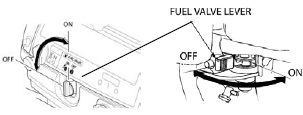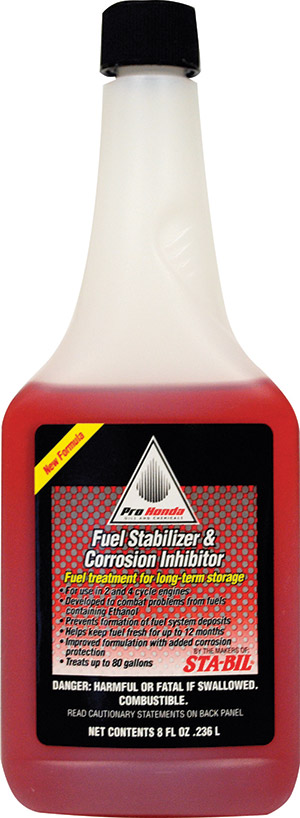Avoiding Fuel-Related Problems
Snow blowers & Snowthrowers
Your Honda snow blower is designed and manufactured to precise specifications to ensure years of trouble-free operation. This includes the fuel system. However, the properties of gasoline can quickly lead to stale fuel that can cause starting or running problems and, in some cases, damage to the fuel system. The good news is most fuel-related problems can be avoided by following a few simple steps.
Follow These Five Steps to Prevent Most Fuel-Related Problems
-
Do not use gasoline containing more than 10% ethanol in your Honda snow blower.
Gasoline containing higher levels of ethanol is corrosive and attracts water, which can cause starting or running problems or, in some cases, damage to your snowblower's fuel system.
-
Store your gasoline in a clean, plastic, sealed container approved for gasoline storage. Close the vent (if equipped) when not in use, and store the container away from direct sunlight. If it takes more than 3 months to consume the fuel in the container, we suggest adding a fuel stabilizer to the fuel when you fill the container.
A clean, plastic container approved for fuel storage will help prevent rust and metallic contaminants from entering the fuel system. Gasoline will deteriorate faster when exposed to air and sunlight.
-
When you're finished using your snow blower (during the season), turn the fuel valve OFF, then start the engine and allow it to run until the engine runs out of fuel. Fill the fuel tank immediately after use to minimize air in the tank.


The small amount of fuel in your snow blower's carburetor will deteriorate faster than the fuel in the fuel tank due to its small volume and proximity to residual engine heat. The fuel valve allows you to stop the fuel flow from the fuel tank to the carburetor for storing and transporting.
Fill the fuel tank after each use (instead of before each use). If the fuel tank is partially filled, air in the tank can promote fuel deterioration.
-
If snowfall in your area is sporadic, resulting in infrequent use over the winter, we suggest adding a fuel stabilizer to the fuel when you first fill your fuel storage container at the start of the season and at each subsequent refill. See below for additional information.
Untreated gasoline left in the snow blower's fuel system can deteriorate quickly, causing starting or running problems and, in some cases, damage to the fuel system. By ensuring that all fuel put in your snow blower is stabilized, you can minimize the chances of deterioration and damage.
-
Off-season or summer storage: Fuel should be removed from your snow blower or snowthrower for off-season or summer storage.
See below for more information.Gasoline left in the snow blower's fuel system during the off-season will deteriorate, causing starting or running problems and, in some cases, damage to the fuel system.
Refer to your snow blower's or snowthrower's Owner's Manual for additional information. If you do not have an owner's manual, you can download the manual here.

PN 08732-0001
Infrequent Use
If you only use your snow blower or snowthrower occasionally during the winter, we suggest adding a fuel stabilizer to your fuel storage container at fill-up.
-
Add gasoline stabilizer to the fuel tank or fuel storage container upon fill-up following the manufacturer's instructions. When adding a gasoline stabilizer, fill the fuel tank with fresh gasoline. If the tank is only partially filled, air in the tank will promote fuel deterioration during storage. Note:
- All stabilizers have a shelf life, and their performance will deteriorate over time.
- Fuel stabilizers will not reconstitute stale fuel.
-
After adding a gasoline stabilizer to the fuel for the first time, run the engine outdoors for 10 minutes to be sure the treated gasoline has replaced the untreated gasoline throughout the fuel system. If you regularly add fuel stabilizer to your storage container when refilling, you may skip this step.
-
Stop the engine and turn the fuel valve to the OFF position.
-
Restart the engine and allow it to run until it runs out of gas. Running time should be less than 3 minutes.
Seasonal or Long Term Storage
Drain all the gasoline from the fuel system (including the fuel tank) by following the instructions in the owner's manual. Do not allow gasoline (with or without stabilizer) to remain in your snow blower/snowthrower for more than 90 days of inactivity.
Stale fuel in your fuel container
If you have some fuel left in your storage container at the end of the season, the Environmental Protection Agency (EPA) suggests adding the gasoline to your car's gas tank provided your car's fuel tank is fairly full and the fuel is appropriate for your vehicle.








